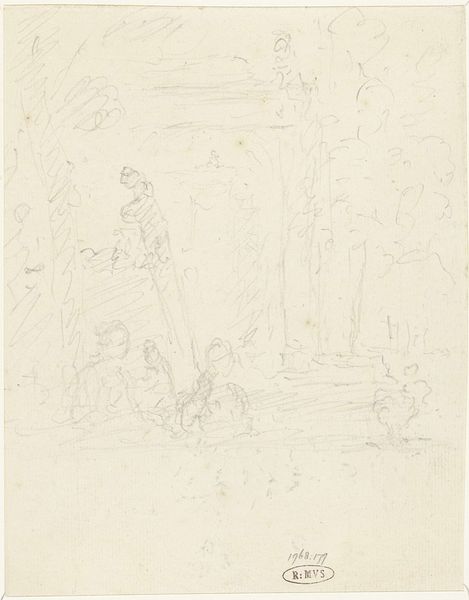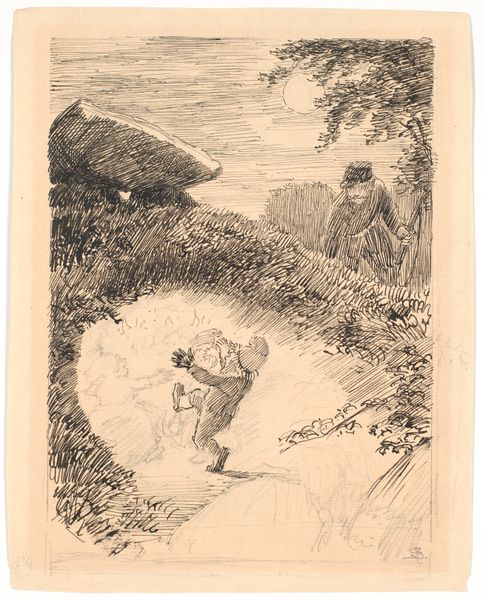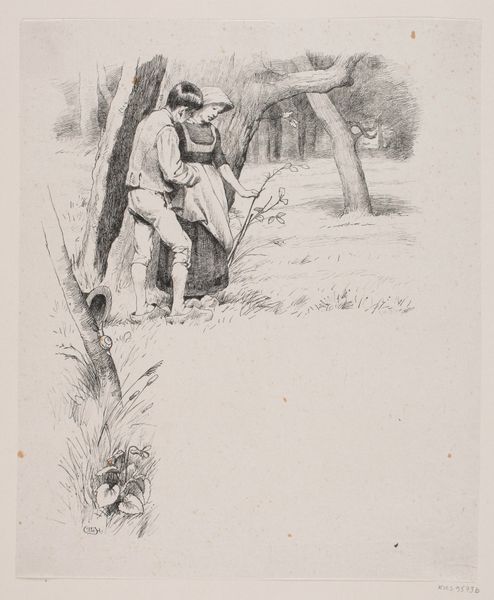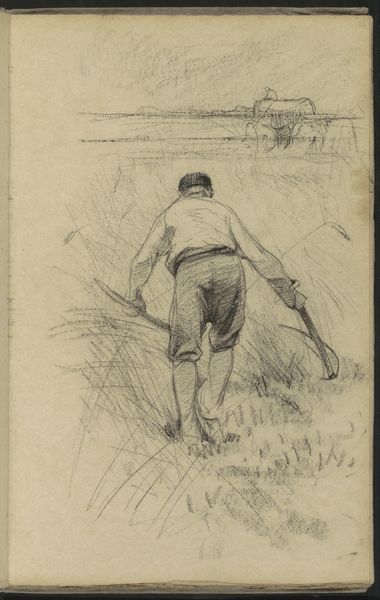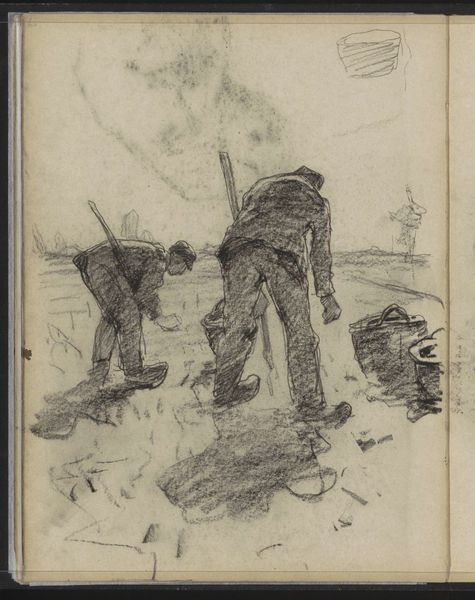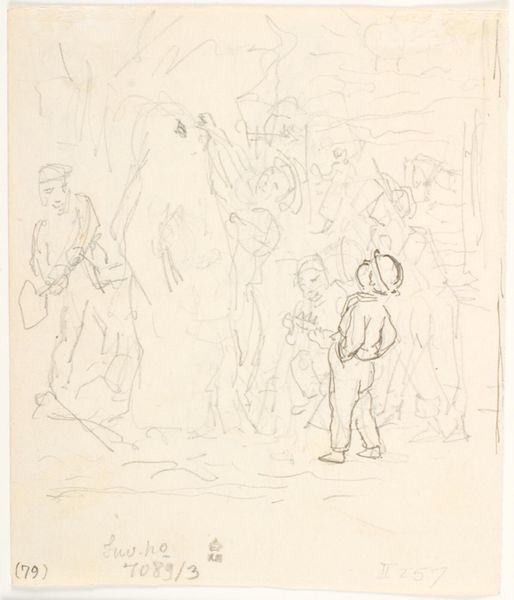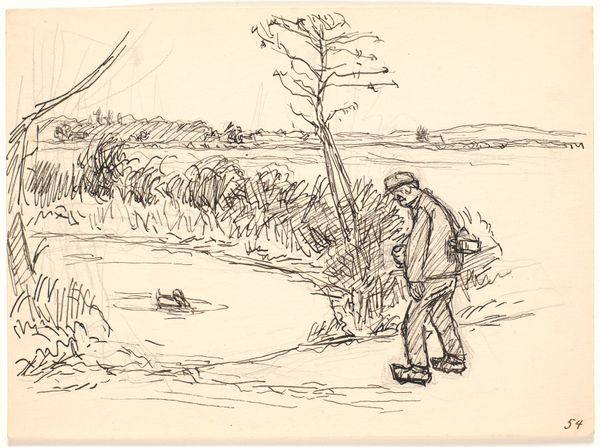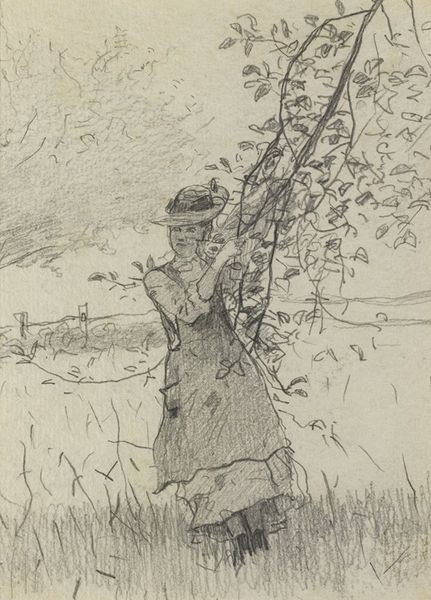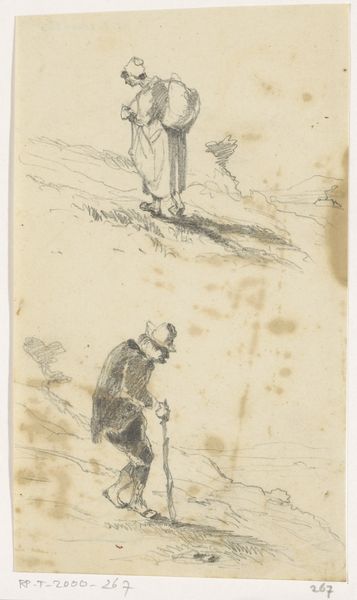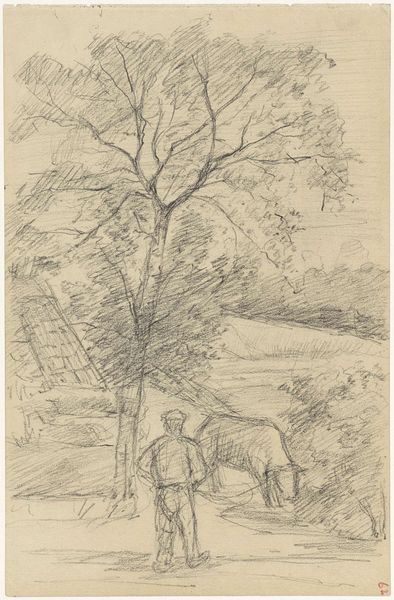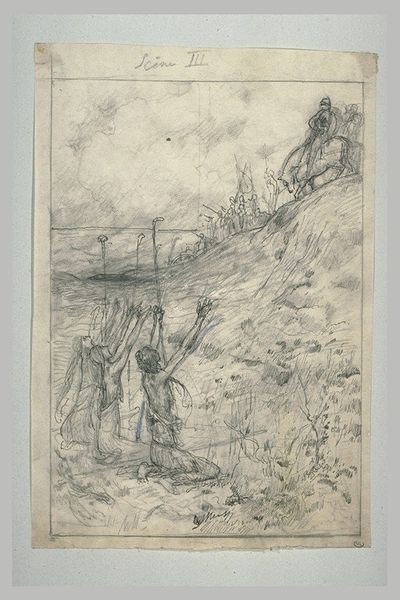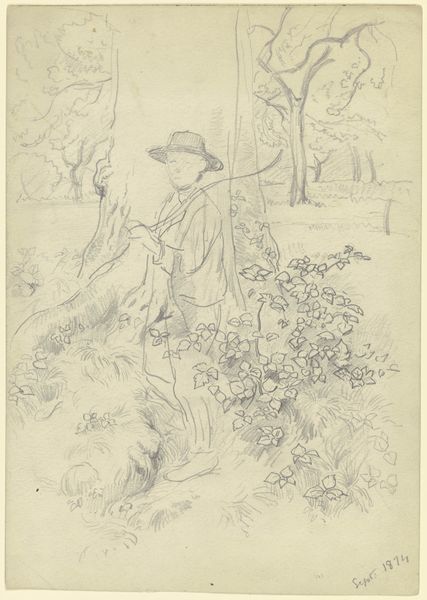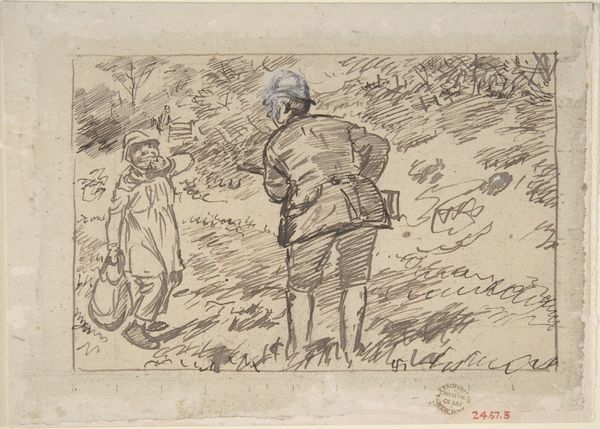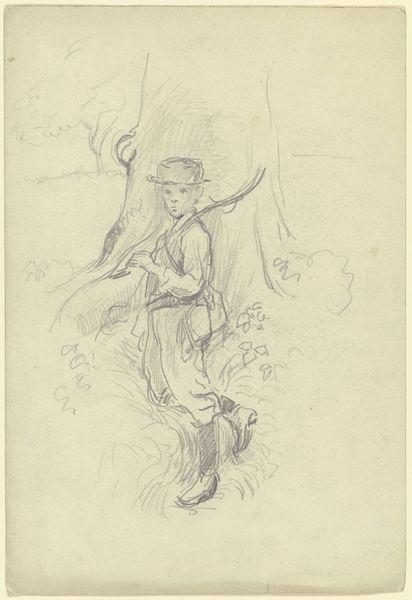
drawing, pencil
#
portrait
#
drawing
#
landscape
#
pencil
#
genre-painting
#
realism
Dimensions: height 285 mm, width 201 mm
Copyright: Rijks Museum: Open Domain
Curator: This is "Boer op het land en schets van een boer en hand," or "Farmer in the field and sketch of a farmer and hand" by Jozef Israels, created sometime between 1834 and 1911. It resides here in the Rijksmuseum. Editor: My first impression is one of profound weariness. Look at the sketched lines, the stooped posture—it's as though the very act of drawing conveys the laboriousness of farm work. The earth, the hands, the labor…all interconnected materially. Curator: Indeed, the drawing itself embodies that sentiment. Israels was known for his realistic depictions of rural life, capturing the dignity and struggle of the working class. In genre paintings like this, farmers represented enduring values, particularly a strong bond to the land. Editor: And notice the sketch-like quality; we see the means of its own making laid bare. The artist has revealed the whole manual process, and emphasizes the conditions, materials, and labor required to both create the work and for the farmers who work in the land itself. It gives the drawing an almost humble, unassuming quality. Curator: The visible pencil strokes serve an expressive purpose as well, don't you think? It reminds me of a landscape burdened with ancestral echoes of physical labour. The repetition of form suggests that farming has the power to shape and transform those that partake in it. We see the main figure captured in action and as a mere study in the bottom left. What purpose did that serve to the main image? Editor: It is compelling how an artwork produced with graphite, paper, and labor, renders visible other forms of work, life, and human consumption of the land. Did Israels himself spend time working the land or researching to give himself these skills, do you think? What choices influenced his perspective on agricultural labor in the 19th century? Curator: A potent reminder that art, even in its simplest form, is never truly simple. Editor: Exactly! It prompts us to ask who is working, and under what conditions.
Comments
No comments
Be the first to comment and join the conversation on the ultimate creative platform.
